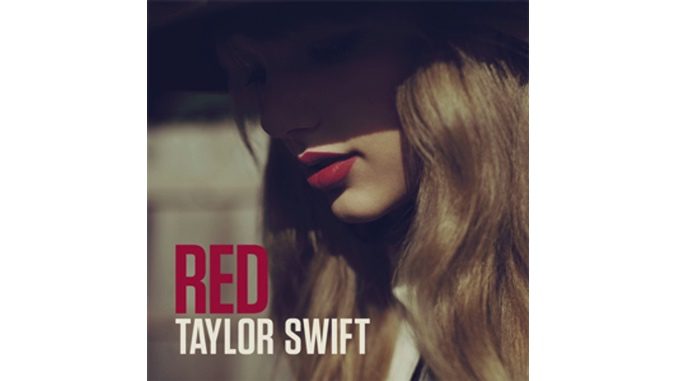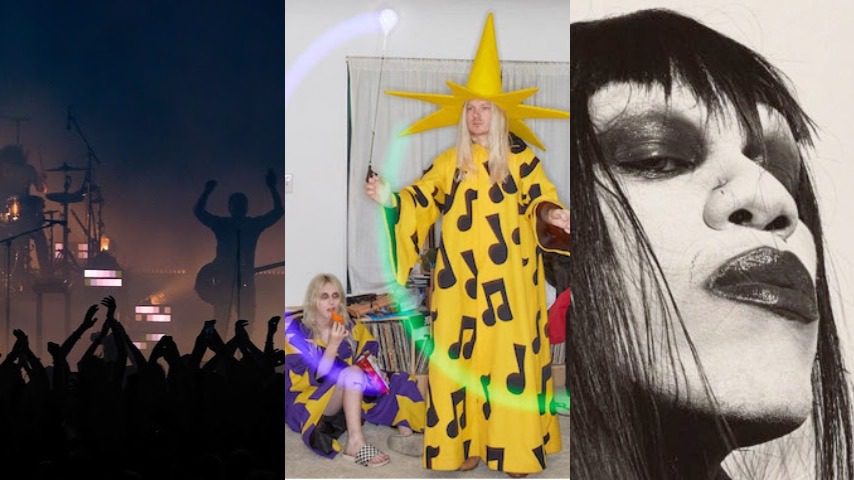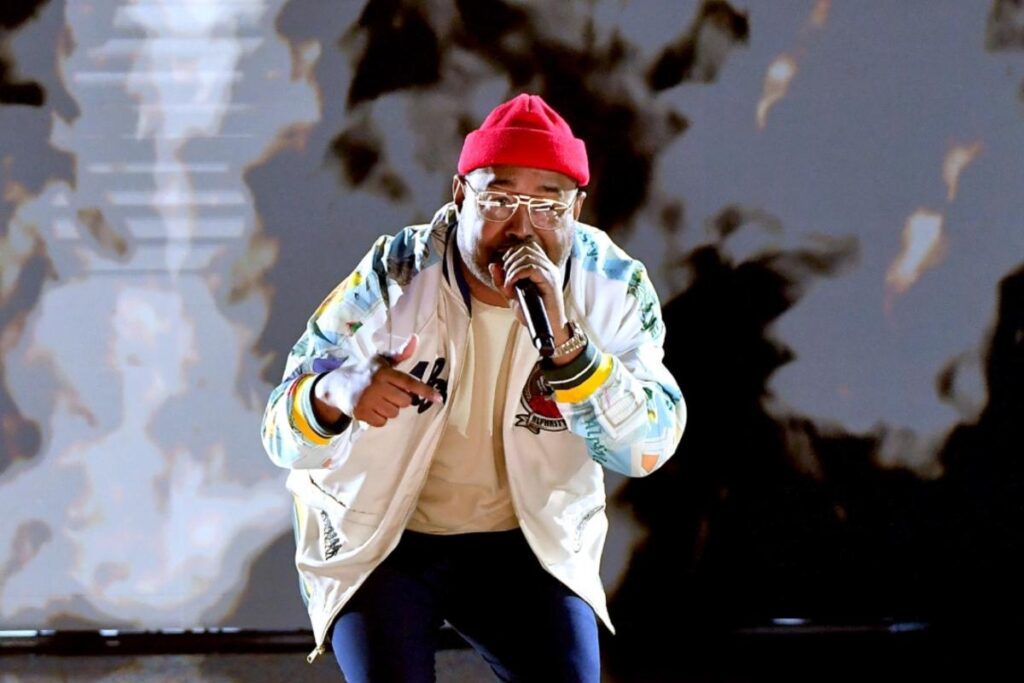Red is Taylor Swift’s best album because it’s the epitome of everything she does best. It’s built on all the “Taylor-isms” that have come to define her identity as a pop artist: songs about falling in and out of love too fast and too hard, bizarre but somehow relatable metaphors, writing that quashes any wall between the personal and the universal, impeccable hindsight, middle-of-the-night revelries.
Just a few weeks shy of the one-year anniversary of the album’s 2021 re-release and one day after Swift will drop her 10th original studio album Midnights, Red will, fittingly, turn 10 this Saturday, Oct. 22. A breakup album at its core, Red traverses the peaks and valleys of being in love and then abruptly single while charting Swift’s sonic leap from country sweetheart to pop juggernaut. While Red cast a long shadow across early-2010s culture, the album—and one song in particular—have transcended that era to become timeless pop marvels. The songs are as complex in 2022 as they were in 2012.
After Swift re-released Red last November as part of her plan to recapture the masters to her first six albums, the record enjoyed both a critical reappraisal and adoration from a whole new generation. Millennials were thrilled to relive “sad girl autumn,” while Swift’s ever-burgeoning teen base had their own chance to become obsessed with the songs and the lore surrounding them. As a 26-year-old, I am and have always been Taylor Swift’s target audience. Like so many women my age, I’ve been there since “Our Song” hit the airwaves, was there when “You Belong With Me” echoed through every retail store on the face of the planet, was there in line for the Red CD, danced into my 20s to the tune of “Blank Space” and will be there till the end. A 2022 college freshman, on the other hand, was—stunningly—2 years old when “Our Song” was released and a mere 8 years old when the “I Knew You Were Trouble” goat first let out its squawk. Despite their absence from her origin story, Gen Z is increasingly filling up Swift’s listenership.
This is not a dunk on zoomers—there’s plenty of room for everyone—but in fact a testament to Swift’s business of inclusivity. When she released the long-coveted 10-minute version of Red centerpiece “All Too Well” alongside the album reboot, Swift cast Stranger Things starlet Sadie Sink and Dylan O’Brien to play the couple in the short film she directed, a decision that shows her strategy around catering to both her younger fans and day-ones. Sink is a household name at least among teens, while O’Brien is one of the quintessential millennial heartthrobs thanks to his 2011-2017 run on Teen Wolf. There’s a draw for both generations.
Long-rumored to be about Swift’s fling with Jake Gyllenhaal, “All Too Well” is said by many to be her best song, but that wasn’t always readily apparent. It wasn’t a single, nor did it receive any special treatment in 2012, but fans have latched onto it over the years, only causing the speculation around the Swift-Gyllenhaal relationship, their near 10-year age gap and that damn “scarf” to grow more feverish. It all culminated last year with the 10-minute version, which is somehow still not long enough. Swift’s remarkable talent for setting the scene is evident in every line, from the “autumn leaves falling down like pieces into place” to “your mother’s telling stories ‘bout you on the tee-ball team,” to every note that sounds like the sharp pangs of a troubled romance. And that there are 11-year-olds walking around right now who can sing every word is miraculous.
Like Kacey Musgraves’ Golden Hour would do six years later, Red transformed both country music and pop music. Culture isn’t always kind to artists—especially country artists—who break out of their genre boxes, but Swift pulled it off brilliantly, all things considered. She recruited pop hitmaker Max Martin and his partner Shellback to produce the album’s trio of radio singles, “22,” “I Knew You Were Trouble” and “We Are Never Ever Getting Back Together.” If there are any Red songs that have aged poorly, it’s these three, but only because they so cleverly mashed Swift’s country sensibilities with features of the then-trendy EDM and dubstep. Everything about these songs sounds so 2012 it hurts, but as the fellow Martin-produced hits from her next album 1989, “Shake It Off” and “Blank Space,” were in 2014, “Trouble” and “22” were inescapable pop fun following their release.
2012 was the perfect cultural storm that allowed for those hits to take flight. Pitch Perfect was a box-office smash, One Direction was one of the biggest bands in the world, and shabby chic and asymmetrical haircuts were a whole personality. Swift took the opportunity to poke fun at the rise in hipster culture throughout the Red press cycle and in “We Are Never Ever Getting Back Together,” where she memorably accused her ex of toting “some indie record that’s much cooler than mine,” and adorning herself in twee stripes and red lipstick whenever possible. Hipsters love to make fun of Taylor Swift; this was the first time Swift made fun of them. Swift and the women who love her have too often been slammed as silly or trivial, as that which is precious to women so often is. Red was not only a significant mile-marker in Swift’s road to pop prowess, but also perhaps the first step in her transformation into something resembling “cool,” a journey that led all the way to her recent collaborations with the likes of Jack Antonoff, The National and Bon Iver.
While some songs on Red, like the mostly country “Begin Again” or any of the flashy pop anthems, lean in one sonic direction or focus on a particular feeling, the most interesting parts of Red happen in the gray area. The stunning “Treacherous” can’t decide if it’s country or pop or something else altogether. “Sad Beautiful Tragic” is all of those things and more. The spare “I Almost Do” brings a whole new meaning to the word “yearning.” “The Lucky One” is a layered confrontation of fame. The title track features both banjo and a pop refrain. And two of the most interesting and manic tracks in Swift’s whole catalog, sisters “State of Grace” and “Holy Ground,” are punky pop spreads studded with stadium-rock appeal (and who could forget the lyrics “Just twin fire signs / Four blue eyes”?).
Red is everything Swift was before and everything she became after. It’s elaborate, occasionally hyperbolic, steeped in its own mythology and intimate all the same. It’s everything we love about her and everything her haters hate about her. And now we have even more Red to love, after Swift tacked on an extra dozen-plus songs to the re-record. But the 16 core tracks stand the strongest. Like the stories Swift loves to fashion into songs, Red looks different in the rearview. It didn’t win a single Grammy after its initial release, but Swift just submitted Red (Taylor’s Version) for 2023 Grammy consideration (yes, the Grammys timeline is completely inane, but that’s a discussion for another time). Maybe it’s still not too late for Red to join Fearless, 1989 and folklore in the spectacle that is becoming a Grammy winner.
While 1989 may have been Swift at the peak of her powers and folklore and evermore may be her most artistically sophisticated output, Red is the most important Taylor Swift album, not because she went pop, but because Red marked the launch of Taylor Swift’s career as a musical shapeshifter and what ultimately led to her world domination. Ten years later, it’s undoubtedly one of the most important pop albums of the century so far. Thankfully, the fashion and fads of 2012 are mostly long gone, but Red is one shade that’s seemingly always in season.
Ellen Johnson is a former Paste music editor and forever pop culture enthusiast. Presently, she’s a copy editor, freelance writer and aspiring marathoner. You can find her tweeting about all the things on Twitter @ellen_a_johnson and re-watching Little Women on Letterboxd.




